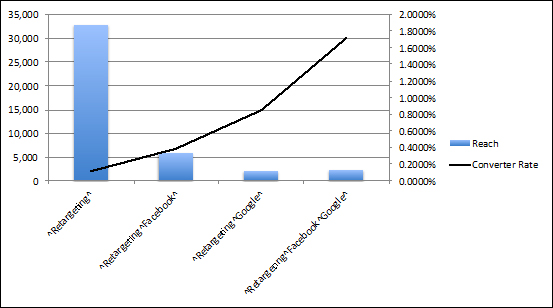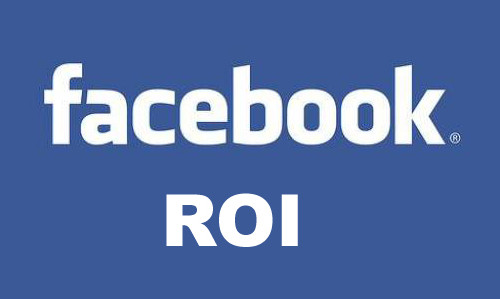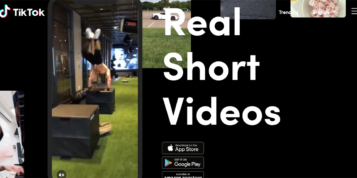One of the hottest topics in the digital marketing industry over the last few years has been how to maximise marketing results on Facebook.
To date, brands have been quick in their attempts to out-do the competition when it comes to the number of fans or likes they can achieve, regardless of whether it adds any measureable value to a marketer’s core objective. Yet, as more budgets continue to flow towards social media, marketers are putting greater emphasis on how to measure Facebook ROI.
One of the reasons that advertisers struggle to measure Facebook ROI is because of an overreliance on measuring the click-through rate, a now antiquated metric. However, Facebook offers a number of effective tools that inform ROI. These include tracking conversion activity on your site via a Facebook pixel, which will then let you see which of your converters clicked or viewed ads on Facebook. Another useful tool is Atlas, a third-party server that is certified to track impressions and clicks on Facebook’s paid media.
Moreover, when this tracking data is fed into multi-touch attribution platforms, it can provide marketers with a more precise measurement of how their Facebook campaigns perform individually and within the context of cross channel campaigns. Additional insight into ROI efficacy, in relation to all online elements (display, mobile, search and even offline channels such as television and print), is also available.
For advertisers looking to maximise Facebook ROI, there are four important considerations to bear in mind:
1. Facebook ads are almost always undervalued
Social media ads, like most online display units, are generally undervalued as a contributor to conversion campaigns. They tend to reach consumers at the top or middle of the funnel and can drive tremendous consumer engagement, but when viewed through common last-click methodology, conversion campaigns appear to fall flat and are therefore mistakenly viewed as underperforming.
However, when a marketer views all of the media touchpoints between a brand and its consumers (called engagement stacks), it is very common for social media touches to take place at the beginning of the engagement stack. As users move through the funnel, they convert via lower funnel tactics such as paid search, or even direct visits to the website.
In one recent campaign, a leading retailer analysed marketing performance data across four different online channels using multi-touch attribution modeling. Facebook received almost 90% more conversion credit when viewed in conjunction with all marketing touchpoints than it did when it was only given credit as the source of the last-click prior to conversion.
Although Facebook was the opening touchpoint for more than 40% of the converters with more than one touchpoint, it accounted for only 10% of the last touchpoints and in more than 9 out of 10 cases that last touchpoint was an impression not a click. Looking at this data, it is obvious that measuring the impact of Facebook on a last-click, or even a last-view basis, highly under-credits its impact. Going back to the example campaign, when measured correctly Facebook was the second most efficient channel, just behind branded search.
2. Facebook placements vary dramatically in how they perform
It is tempting to think of Facebook as an overall publisher. You often hear things like “Facebook works brilliantly” or “Facebook did not work for us”. This greatly simplifies (to a fault) the impact and potential of a marketing venue that has aggregated almost one billion people.
As we all know, Facebook can offer a myriad of benefits: it is a tool to build awareness and buzz, increase propensity to convert, curate and moderate content, complement customer service, and much more. Furthermore, the way Facebook users interact varies dramatically across these functions. Some users like complaining or publicising their brand interactions on Facebook, while others are simply voyeurs who are influenced by their friends, but don’t influence in return.
When media buyers purchase placements, it is important to understand not just what audience you are reaching, but also how that audience interacts with Facebook as well as other media channels. To understand these differences, not only do brands need to use multi-touch attribution (as discussed above), but they also need to measure at the placement level.
To examine this in practice, let’s look at an example. A lifestyle marketer invested in a number of placements on Facebook as part of a conversion campaign, but noticed that placements targeting an older demographic seemed to convert at around the same rate as those targeted at a younger demographic when measured using last-click. However, when looked at in conjunction with all the other media channels, it was apparent the younger demographic users exhibited very different consumer behavior than the older demographic.
In particular, they had a much greater propensity to visit sites outside Facebook to validate the value-proposition in the advertising. After having done so, they would then return to the marketer’s site and convert. When using a last-click methodology, Facebook did not get any attribution credit. However, by factoring in the cross-channel behavior of the audience, it turned out that the placement targeting the younger demographic actually performed 68% better at driving conversions than the placement targeting the older demographic. Optimising placements using last-click based measurement would have cut off an important avenue to keep scaling their business.
3. Media planners have trouble allocating budgets to Facebook
Properly allocating budget on Facebook is a major concern expressed by marketers. They may have years of experience with search, display, email and video, but because of the perceived problem of tracking results, they are generally forced to take a “hit or miss” strategy with this very efficient channel. “What-if?” scenario planning functionalities, now available through a number of marketing solutions, help media buyers solve this issue by analysing all of their in-market media and producing automated media allocation recommendations at the placement level, and for Search Engine Marketing (SEM) at the keyword level.
For example, on a recent campaign for a provider of consumer services, one “What-if” analysis suggested that the marketer should spend an extra 30% on Facebook, which equated to more than a half-million-dollar increase. The advertiser followed the recommendation and saw their overall campaign CPA drop by 31% as a result of the increased efficiency produced from this single optimisation.
4. Correlation vs. Causality on Facebook
One common challenge with the measurement of media is it often measures Gross contribution, not Net (incremental) contribution. As a result, it becomes much harder to truly understand the impact of your media efforts.
To help fully appreciate the incremental impact of Facebook, marketers can adopt a number of techniques, including purchasing placebo placements, designing test and control experiments, utilising econometric analyses that can capture longer term trends and establishing a firm baseline of conversions as a result of your brand equity and more.
In the example below from a recent campaign, a brand was running a retargeting campaign, Facebook campaign and search campaign on Google – all at the same time. When looking at the number of users it touched with the retargeting campaign alone, the conversion rates (proportion of users that converted relative to the number of users it reached) were approximately 0.1%.
However, when looking at users that were touched by both its Facebook campaign and its retargeting campaign, converter rates increased four-fold. Not all of the users reached by the broader retargeting campaign were touched by the Facebook campaign as well, but it still corresponded to about 15% of the total reach. This clearly shows that stimulating your audience via Facebook, when paired with stimulation via other media, has a much bigger incremental impact than using a single channel alone.

These are just a few of the insights into Facebook marketing efforts gained throughout the first era of the social network’s advertising offering. It’s not a secret that Facebook is planning to continuously roll out new and innovative opportunities for marketers – their audience scale is absolutely unprecedented and advertisers will always want to get closer to these highly engaged users.
As Facebook evolves, marketers need to be nimble, smart and well-informed about the tools and techniques that will allow them to best reach these users, as well as understanding which messages and ad units impact ROI, and how to allocate the right budget to this channel. By understanding these four key considerations, you too can harness and measure social media effectively for your brand.






